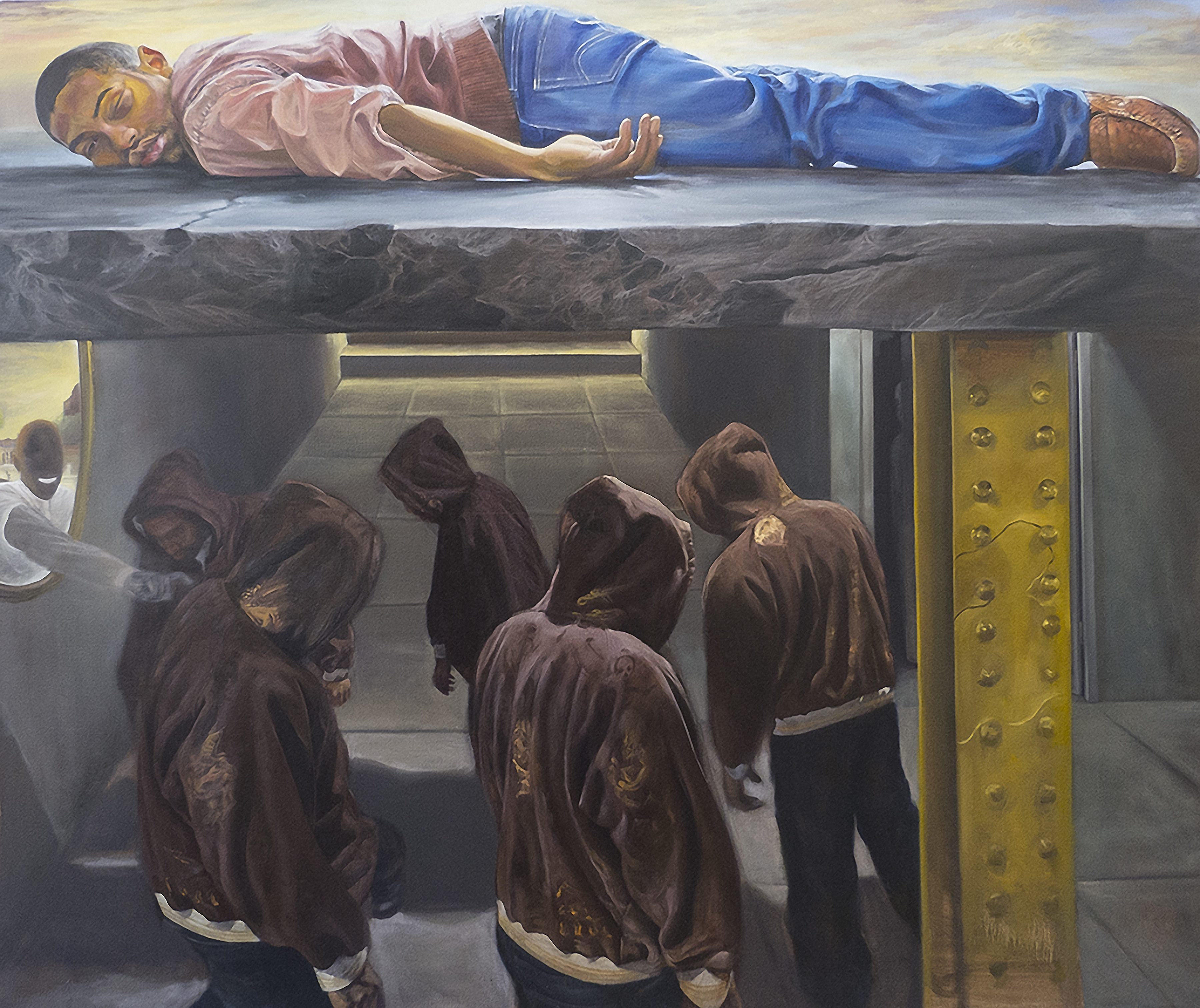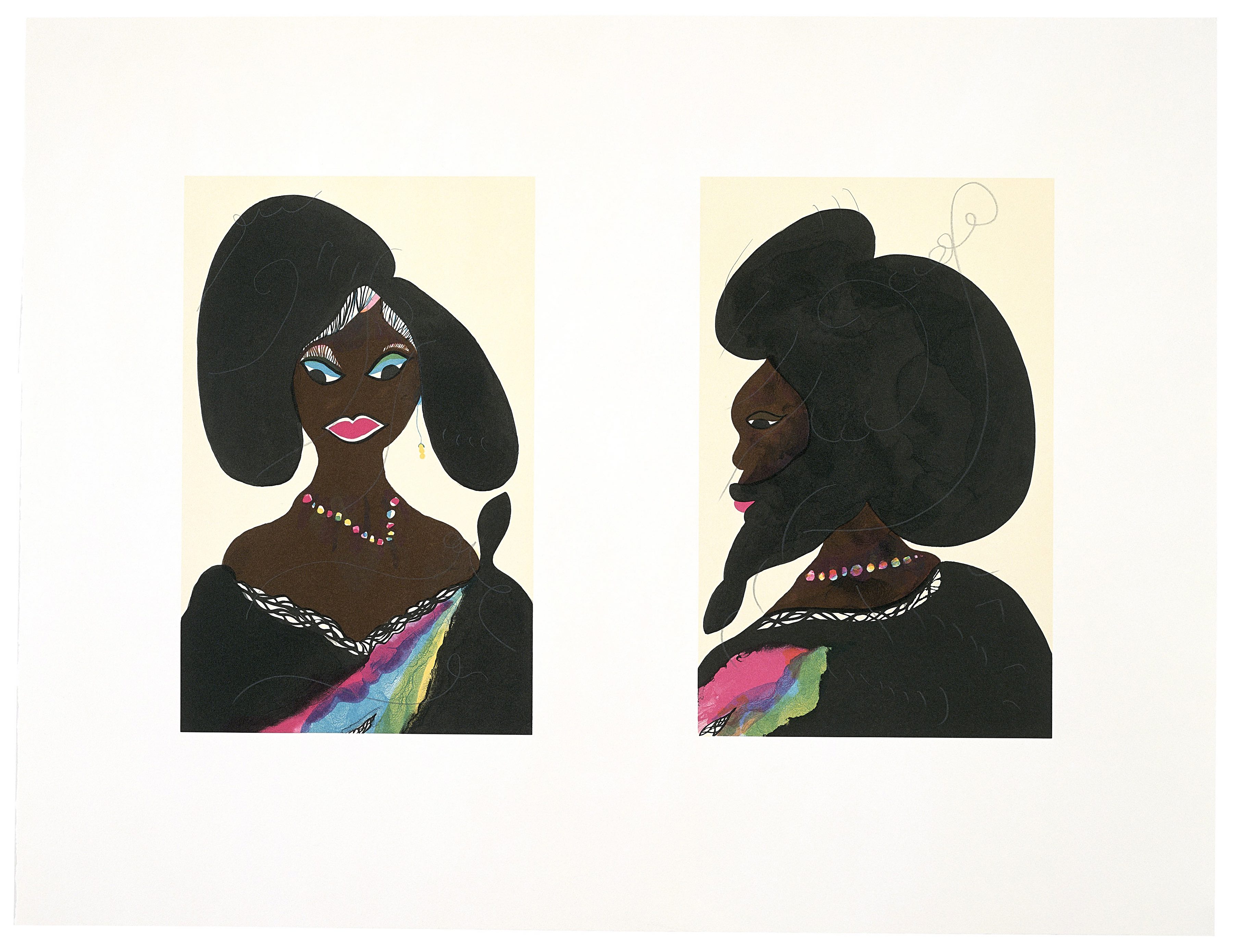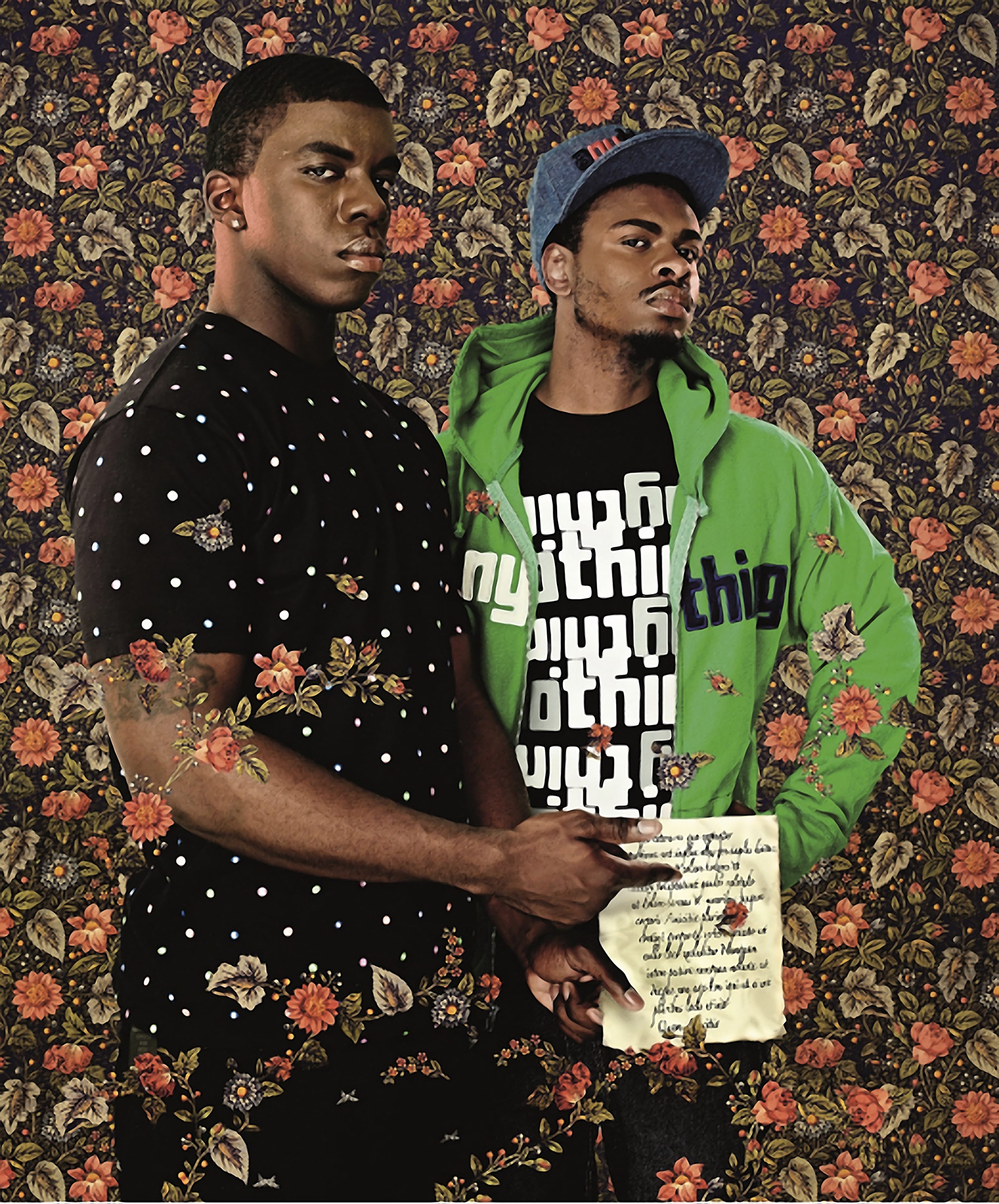
In 2016, while she was preparing to open her exhibition, Mentors, Muses and Celebrities, Mickalene Thomas reflected on the women who had come to her studio to sit for her. She observed, “when [some] were dressed up, they became more of themselves. It’s like they see themselves in the lens, and the lens becomes the mirror, and for me that is very beautiful.” In a 2015 painting, I’ve Been Good to Me, Thomas riffs on black muses from the sixties and seventies, recalling characters like Foxy Brown—rich in visual codes and references, the painting is an eloquent expression of why how you look matters—even more so, when your body is the object of fetish and under threat.
The clothes we wear, how and when we wear them, is a meaningful act—but when fashion dictates one way of being beautiful, dressing becomes implicitly political. Garments are expressions of fantasy, sexuality, class—especially for the sheros and stars Thomas likes to paint. The artist recalls how, growing up, “not feeling as beautiful as most people”, she felt “my levels of desires were prevented by how people related to me”.

The hoodie worn by Travyon Martin—an item of clothing that has since been used as a form of protest—has become symbolic. Tabloid talk show host Geraldo Rivera even suggested that Latino and black youths shouldn’t be allowed out wearing hoodies, stating “I think the hoodie is as much responsible for Trayvon Martin’s death as George Zimmerman was.” Rivera’s very public remarks (for which he later apologized) again illustrated to the world why clothes matter—especially if you’re black and living in the US today. Uncannily prescient, the painter Mario Moore pointed to the way the hoodie is intertwined with a racist image of black youths in the US in a painting completed only months before Martin’s murder, One Day in the Land of Milk and Honey.

Both Moore and Thomas were among the artists included in an exhibition in St Louis at Projects+Gallery, Fashioning the Black Body—an exploration of what style, fashion and dressing mean for contemporary black artists and how it creates space, both physically, psychically and in history.
“Fashion and style are merely vehicles through which we communicate our idea of ourselves to others; fashion is the ‘what’ and style is the ‘how’. Dario Calmese, who curated the exhibition, reflects: “Race is a construct, and Blackness is not monolithic, so outside of stereotyping and grand generalizations, to map one onto the other is irresponsible. However, the role of improvisation in Black culture is a through-line that weaves itself through our music, cuisine, style of dress, art-making, and language; essentially a creative device evoked when confronted with limitations.”

From the actual manipulation of cloth (weaving, quilting and sewing) to the representation of clothes in figurative works, Fashioning the Black Body was also a chance to reflect on the way in which contemporary artists deconstruct and refabricate the idea of black bodies. For example, Moroccan-born Hassan Hajjaj, whose eclectic and instantly recognizable style combines the colours, patterns and textures of North Africa and East London—an aesthetic shaped by his early experiences in a city that pushed migrant communities to the periphery. This nomadic tribe has become the mainstay in Hajjaj’s practice—people from everywhere, each with their own aesthetics and heritage.
“Personally, fashion is costume; a completely accessible and analog technology that we all engage with daily to transform interiority into exteriority,” Calmese explains. “The dissonance and/or distance between who we are and who we want to be is what interests me most. Historically, yes, fashion has been a device to connote social status and occupation, but illusions are tenuous and appearances are deceiving. Colloquially we speak of ‘power dressing’ or ‘dressing the part’, but when Blackness is mapped onto your physical being via the white gaze, these carefully constructed sartorial facades can deteriorate and, at times, diminish agency.”
US-based artists Firelei Baez, Njideka Akunyili Crosby and Tschabalala Self have all subtly woven the political threads of garments, dyes, patterns and textiles into their narratives—introducing the exploitation and appropriation present in the colonial past, and the way that garments can be majestically reclaimed. Their portraits show fashion and style as defiant and celebratory.

In the work of Kehinde Wiley, clothes speak about history, and the performance of gender, sexuality and class, from his position and perspective. His famous male figures wear their own clothes as an expression of pride and resistance. When he first began to paint women in 2012, however, he amped up the theatrics, with couture and heavy make-up. These are artworks that travel, as Wiley does: he’s exhibited around the world, and has studios on three continents.
“The question of how minorities can use fashion and style to empower themselves is also rife with assumptions and agreements, and must itself be questioned. Firstly, there is the word ‘minorities’. A minority in relation to what and to whom? Globally, brown people are a majority, so is this question for those of European descent? If we’re exclusively speaking of hegemonically white societies, one has to: 1. acknowledge the oppression of white supremacy, against which minorities MIGHT be able to use fashion as a device to regain lost agency. 2. tread carefully, as Respectability Politics are a slippery slope and still, in the West, centers whiteness,” Calmese points out. “With that foundation laid, to paraphrase James Baldwin, the only way to navigate the world is to know the worst things about it. Knowing what you’re up against, and that appearances DO matter (human vision and the ability to see in color saves us from many a detriment), those who perpetuate the status quo are usually rewarded, but suffer the loss of individuality.”
As Thomas put it: “We don’t necessarily see ourselves until we look into a mirror; we can be those mirrors when we see ourselves in each other and have a sense of validation.”





